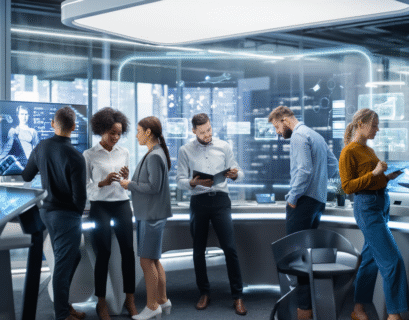The Evolution of Retail: A New Chapter
The future of retail services is not just about selling products; it’s about creating unique and memorable experiences. As technology continues its relentless march forward, the ways in which customers interact with retail stores are changing rapidly.
Picture this: You walk into a store, and a friendly AI assistant greets you by name, ready to offer personalized recommendations based on your past purchases. Instead of traditional shelves, interactive digital displays invite you to explore products in 3D. This isn’t a scene from a sci-fi movie; it’s the near future of retail services.
What Drives Change in Retail Services?
Several factors are accelerating the transformation of retail services:
- Technology Advancements: The rise of AI, augmented reality (AR), and the Internet of Things (IoT) are enabling retailers to provide more immersive and personalized shopping experiences.
- Consumer Expectations: Modern consumers, empowered by digital tools, expect convenient, engaging, and frictionless shopping experiences.
- Competition: As online shopping giants like Amazon continue to grow, physical retailers are pushed to innovate to stay relevant.
“In a world where technology is weaving new patterns in commerce, innovation isn’t just a desire—it’s a necessity.” – Retail Expert
Key Innovations Shaping the Future of Retail Services
Let’s delve deeper into some of the innovations that are poised to redefine the future of retail services.
1. Use of AI and Machine Learning
AI is becoming increasingly important in retail, helping businesses predict consumer behavior and offer custom shopping experiences. Machine learning algorithms analyze customer data to deliver personalized recommendations and deals. A great example is the AI-powered recommendation engine used by Netflix, which now inspires retail to promote relevant products based on past interactions.
2. Augmented and Virtual Reality (AR/VR)
Virtual fitting rooms are reshaping the fashion industry, allowing customers to “try on” clothes without physical contact. Sephora, for instance, offers a virtual artist feature that lets users test makeup products virtually. Such experiences not only enhance engagement but significantly reduce return rates.
3. Omnichannel Experiences
Retailers are increasingly adopting an omnichannel approach, ensuring a seamless customer experience across various touchpoints—be it in-store, online, or via mobile apps. Target’s use of e-commerce services to complement their physical stores exemplifies this blend, allowing customers to buy online and pick up in-store seamlessly.
4. Sustainable Practices
There’s an ever-growing demand for sustainability in retail. Customers value brands that prioritize eco-friendly practices. Companies like Patagonia and Everlane are leading the charge, offering transparency in their supply chains and promoting sustainable products.
Building Brand Loyalty Through Enhanced Customer Experience
Customer experience is at the heart of the future of retail services. Providing an engaging and personalized shopping experience not only attracts customers but also fosters brand loyalty. Retailers are focusing on tailoring experiences that make each customer feel valued and appreciated.
“The retailers who understand and adapt to the changing landscape will be the ones who thrive.” – Industry Analyst
Challenges Facing the Retail Industry
Despite the exciting innovations, the retail industry faces several challenges:
- Data Security: With increasing reliance on big data, protecting customer information has become paramount.
- Integration of Technology: Adopting new technologies can be costly and complicated, particularly for smaller businesses.
- Evolving Customer Preferences: Retailers must continuously adapt to shifting consumer behaviors and preferences.
The Path Forward
As we look towards the future of retail services, the key lies in embracing change and leveraging technology to enhance customer experiences. By staying attuned to consumer needs and harnessing innovative technologies, retailers can navigate the evolving landscape and remain competitive.
So, what does this mean for both businesses and consumers? It signifies a shift where the shopping experience is more customer-centric, personalized, and engaging than ever before. Retailers who embrace these changes will not only survive but thrive in this new era of retail.













